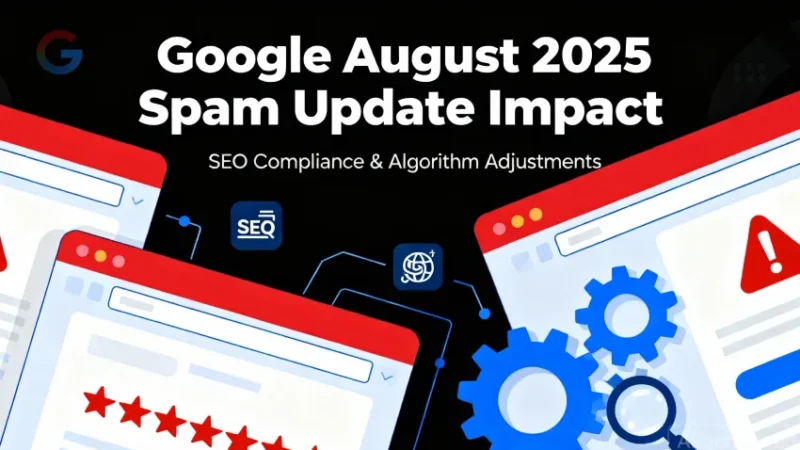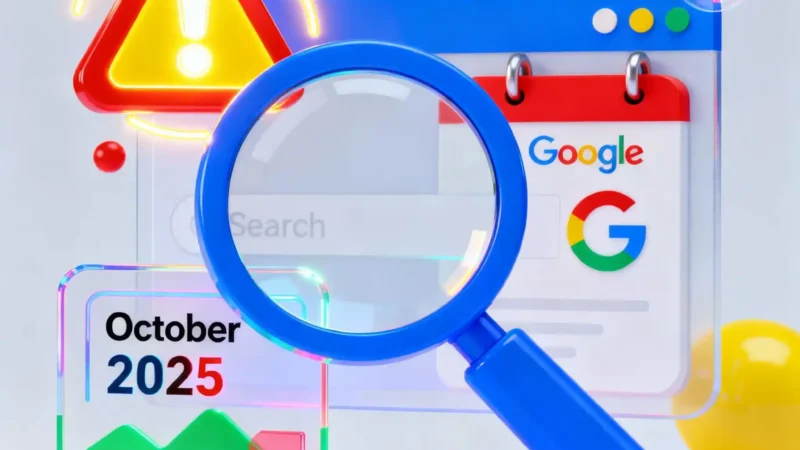The message from Google’s Q3 2025 earnings is loud and clear: AI-powered search isn’t cannibalising traditional search it’s expanding it. With the rollout of AI Mode and AI Overviews, Google reports not just more usage, but new kinds of usage, signalling a pivotal evolution for marketers, publishers and search strategists alike.
1. Key Insights from Google’s Report
AI Mode & AI Overviews Driving Growth
Google noted that AI Mode its new, more interactive search experience is now available in over 40 languages and has surpassed 75 million daily active users. Similarly, AI Overviews are contributing “meaningful query growth,” meaning searchers are engaging in more sessions, more deeply.
This suggests that AI features are adding to search volume rather than replacing traditional queries.
Search & Commercial Queries Are Growing
Beyond AI features, Google reported growth in both overall and commercial search queries year-over-year, with Q3’s growth outpacing Q2. In short: people are searching more, and many of those searches carry intent purchase decisions, service evaluations, and deeper research.
AI Experiences Send Clicks & Traffic to Sites
Despite fears that AI interfaces might eliminate organic click-throughs, Google claims that AI experiences “highlight the web” and send billions of clicks to sites each day. This is an important distinction just because AI is involved doesn’t mean websites lose out; rather, they must be ready to capture this new type of attention.
Measurement Gaps & Future Risks
Google hasn’t yet provided detailed reporting on how many users click out of AI Overviews or how usage of AI Mode distributes across sites. For marketers, that means measurement and tracking must evolve. Users may spend more time in Google’s AI experience before clicking out or perhaps click less but we don’t yet have full clarity.
2. Why This Matters for Marketers & Publishers
Search Strategy Needs to Expand, Not Contract
If AI features are expanding search, then a successful strategy must embrace them not hide from them. Whether you’re a content creator, SEO specialist or business owner, watch these shifts:
- Content depth matters more: AI Mode and Overviews reward content that goes beyond surface-level. If Google is offering an overview, your page must give something unique insights, data, voice, or commentary.
- Clicks are still valuable: Because Google says it sends “billions of clicks” daily to sites via these experiences, capturing those clicks and the user experience after them is still critical.
- New signals are emerging: Sites that are technically sound, mobile-optimised, authoritative in their niche and aligned with user intent will likely fare better in this evolving paradigm.
Publishers Need to Adapt Their Analytics
Traditional metrics like organic impressions and clicks are still valid, but you’ll want to layer in new indicators:
- How many impressions result from AI surfaces (if you can detect them)?
- What’s the behaviour after an AI-driven click: dwell time, bounce rate, conversion?
- Are you being surfaced in summary or overview contexts? Are you providing enough context or depth to make people click through?
The Commercial Impact Is Real
With commercial queries growing and Google emphasising that AI-led sessions haven’t reduced ad-engagement, businesses should view this as an amplification of opportunity not a threat. More queries with intent means more potential for visibility, leads and conversions if you get your foundational strategy right.
3. What You Should Do Now
Audit & Optimise Content Depth
- Identify your pages that serve as deeper-dive resources (versus shallow posts) and ensure they include expert insight, case studies or commentary that AI summaries won’t replicate.
- Update outdated content and enrich with visuals, data and specific value.
- Consider creating pillar pieces aimed at high-intent topics; these can become the “click-through landing pages” from AI-driven search.
Enhance Experience & Click-through Value
- Make your meta titles and descriptions compelling remember you’re competing against not just other pages, but AI surfaces.
- Improve user experience: fast mobile loading, intuitive layout, clear call-to-actions, minimal distractions.
- Track performance post-click: If AI surfaces send more users to you, you must deliver on their expectation or risk increased bounce.
Future-proof with AI Awareness
- Monitor how your content appears in search: Are users getting quick answers via AI and skipping your page? If so, shift your content to deeper value, not just answers.
- Stay updated with Google’s product roadmap (e.g., model upgrades, new AI-integrated experiences).
- Think about voice of authority: As AI becomes more prevalent, demonstrating expertise, authoritativeness and trust becomes even more essential.
Conclusion
Google’s Q3 2025 earnings reveal a shift in search: AI Mode and AI Overviews aren’t simply new features they’re expanding the search universe. For marketers and publishers, this is not a moment to pull back but to lean in.
By delivering richer, more expert-driven content; offering compelling click-through experiences; and embracing measurement that reflects this evolving ecosystem you position yourself to reap more traffic, more engagement and more conversions in a world where AI and search are increasingly intertwined.




